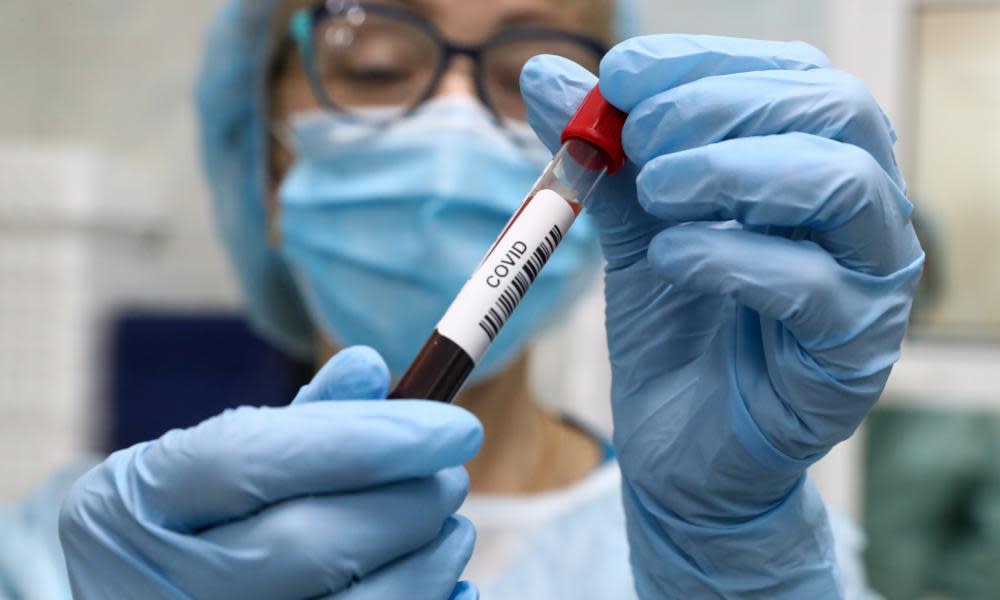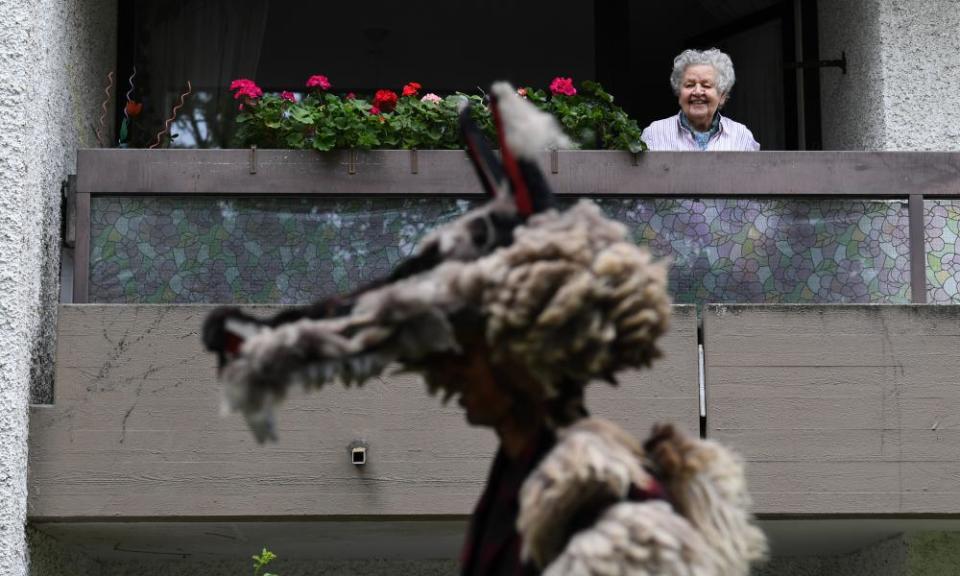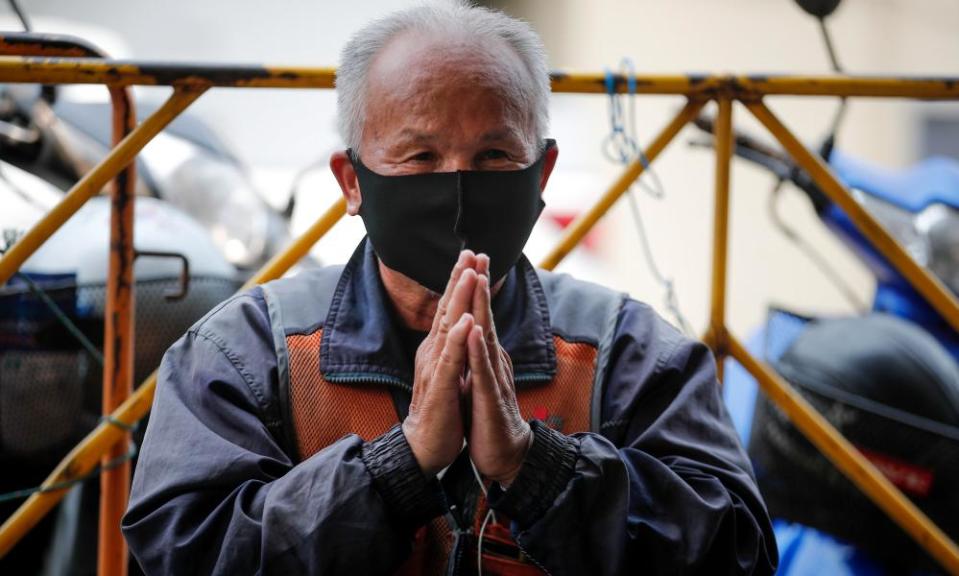Are we underestimating how many people are resistant to Covid-19?

During the first wave of the Covid-19 pandemic, cities were in general affected worse than smaller conurbations or rural areas. Yet in Italy, Rome was relatively spared while the villages of Lombardy experienced very high rates of sickness and death. Then again, one Lombard village – Ferrara Erbognone – stood out for not recording a single case of Covid-19 at the height of the wave. Nobody knows why.
The puzzle is not just Italian. From the beginning, Covid-19 struck unevenly across the globe, and scientists have been trying to understand the reasons. Why are some populations or sectors of a population more vulnerable than others? Or to turn the question around, why are some groups relatively protected?
In the Observer last weekend, neuroscientist and Covid-19 modeller Karl Friston of University College London suggested – on the basis of his comparison of German and British data – that the relatively low fatality rates recorded in Germany were due to unknown protective factors at play. “This is like dark matter in the universe: we can’t see it, but we know it must be there to account for what we can see,” he said.
While this is a novel view – most experts praise Germany’s lockdown and systematic testing regime – others are working hard to identify factors which are modulating the spread of Covid-19 and in doing so could explain other puzzles – such as why Japan seems to have avoided a lethal first wave despite its relatively old population and lacklustre public health response, or why Denmark, Austria and the Czech Republic have reported no surge in cases despite their early easing of lockdown measures. That could shape how governments manage the risks of a second wave.
One thing seems clear: there are many reasons why one population is more protected than another. Theoretical epidemiologist Sunetra Gupta of the University of Oxford thinks that a key one is immunity that was built up prior to this pandemic. “It’s been my hunch for a very long time that there is a lot of cross-protection from severe disease and death conferred by other circulating, related bugs,” she says. Though that cross-protection may not protect a person from infection in the first place, it could ensure they only experience relatively mild symptoms.

Gupta’s hunch has remained just that, because of the lack of data on immunity to Covid-19. Antibody testing, as we know, was slow to get going and unreliable to begin with, and the results to date suggest that the proportions of populations carrying antibodies to the Covid-19 virus are often in single or low-double digits. New, more sensitive antibody tests that have become available in recent weeks could soon provide a much more accurate picture if deployed widely enough, but there are already hints that the results to date may be underestimates.
First there was evidence based on diagnostic testing of postmortem samples from patients who died in December that the virus was circulating in western countries – notably France and the US – about a month earlier than was initially thought. New research shows that another component of the human immune response – T cells, which help orchestrate the antibody response – show memory for coronavirus infection when exposed to Sars-CoV-2, the virus that causes Covid-19.
In a paper published in Cell on 14 May, researchers at the La Jolla Institute for Immunology in California reported that T cells in blood drawn from people between 2015 and 2018 recognised and reacted to fragments of the Sars-CoV-2 virus. “These people could not have possibly seen Sars-CoV-2,” says one of the paper’s senior authors, Alessandro Sette. “The most reasonable hypothesis is that this reactivity is really cross-reactivity with the cousins of Sars-CoV-2 – the common cold coronaviruses which circulate very broadly and generally give rather mild disease.”
The finding supported an earlier one from a group at the Charité hospital in Berlin, detecting T cell reactivity to proteins in the Sars-CoV-2 virus in 83% of Covid-19 patients but also in 34% of healthy volunteers who had tested negative for the virus itself.
David Heymann, an epidemiologist at the London School of Hygiene and Tropical Medicine who advises the World Health Organization on Covid-19, says these results are important, but cautions that cross-reactivity doesn’t necessarily translate into immunity. To determine whether it does would involve following a large number of people who show such cross-reactivity to see if they are protected, if not from infection with Covid-19, then at least from severe forms of the disease.
It is, however, a reasonable hypothesis that exposure to other coronaviruses could confer protection, Sette says. “We’ve seen it before, for example with the 2009 H1N1 flu.” Older people fared well compared to other age groups in that pandemic, he says, probably because their immune systems had been primed by exposure to similar flu strains from decades before. That could be the reason the 2009 pandemic was less lethal than other flu pandemics in history, killing an estimated 200,000 people globally.
If exposure to other coronaviruses does protect against Covid-19, Gupta says, then variability in that exposure could explain much of the difference in fatality rates between countries or regions. Exposure to the related virus that caused the epidemic of severe acute respiratory syndrome (Sars) in 2002-4 might have afforded some protection to east Asians against Covid-19, for example.

In late March, Gupta’s group published a paper that drew attention because it generated very different forecasts from those of epidemiologist Neil Ferguson of Imperial College London and his colleagues – to whom the UK government was listening most closely. The Oxford group suggested that up to half of the UK population could already have been infected by Sars-CoV-2, meaning the infection fatality rate (IFR) – the proportion of infected people who went on to die – was much lower than Ferguson’s group was indicating, and the disease was therefore less dangerous. Neither group had much data at that point, and Gupta says that her intention was to highlight that, in the absence of data, a wide range of scenarios should be considered.
Two months on, she stands by her model, but wishes that she had made its implications clearer. “The truth is that the IFR is not a hardwired property of the virus or of our interaction with the virus,” she says. “It’s the vulnerable fraction [of the population] that is determining the average overall risk of dying.” Once an elderly care home is infiltrated by the virus, for example, the virus spreads rapidly through it and is often lethal, pushing up the IFR. This means it is critical to understand why some people are resistant and others are not, so that those who are vulnerable can be protected.
We know some of those vulnerability factors. Age is the most obvious one. Unlike with the 2009 flu, elderly people are particularly vulnerable to Covid-19 – a fact that might reflect the history of exposure to coronaviruses of different age cohorts. Comorbidity is another, and a third is being male. According to Garima Sharma of Johns Hopkins University School of Medicine in Baltimore, who with colleagues recently published a paper on sex differences in Covid-19 mortality, women are protected by virtue of having a “backup” X chromosome. “X chromosomes contain a high density of immune-related genes, so women generally mount stronger immune responses,” she says.
Socioeconomic status, climate, culture and genetic makeup could also shape vulnerability, as could certain childhood vaccines and vitamin D levels. And all of these factors can vary between countries. The Japanese might have been afforded some protection, for example, by their custom of bowing rather than shaking hands. And though most of the disparity between the sexes is down to biology, Sharma says some of it is due to social and behavioural factors, with women being more likely to wash their hands and seek preventive care.
It is also becoming clear that protecting the vulnerable has made a big difference to outcomes so far. Italy and Germany, for example, have similar proportions of over-65-year-olds – just over 20% of the population in both cases – and yet the two have reported strikingly different fatality rates. The case fatality rate (CFR) – the proportion of the sick who go on to die – is less informative but easier to measure than the IFR, because sick people are more visible than merely infected ones, and as at 26 May the CFR in Italy was about 14%, compared to 5% in Germany.

Italy is more densely populated than Germany, and Italian homes tend to be smaller than German ones. Many Italians in their 20s and 30s live at home with their extended families, which meant that transmission to the elderly was high and, when critical care units were overwhelmed, so were deaths. This is rarer in Germany, where many elderly care homes also enacted a strict isolation regime. In Germany, says Heymann, “they did a better job in keeping the elderly protected”. Some estimates suggest that only 20% of German Covid-19 cases were over 60, as compared to more than 90% in Italy.
The UK, which has recorded the second highest death rate from Covid-19 after Spain, has not looked after its elderly so well – deciding at one point to discharge patients from hospitals back to care homes without testing them for the disease. The government’s advice to 1.5 million UK citizens with underlying health conditions to self-isolate for three months from late March may have helped protect those people, but for Gupta the UK’s high death rate reflects a deeper problem – years of erosion of community support services that provided pastoral care. “There is just not enough investment in the NHS and in that GP or other frontline individual who advises the vulnerable person,” she says.
Holding to her hunch, she believes that lockdown was an overreaction and that frontline care and protection of the vulnerable – which should have been a priority from the beginning – should be prioritised now. She also thinks that the worst is behind us, and that while subsequent waves can’t be ruled out, they will probably be less bad than what we have experienced so far. The disease will settle into an endemic equilibrium, in her view, perhaps returning each winter like a seasonal flu.
Friston’s models also suggest that immunity in the population is higher than data indicates, but for him it’s not clear how long that immunity will last – and he argues that test-and-trace protocols should be put in place now, ahead of any possible second wave that might erupt once that immunity drops off. Heymann remains wary of models, which he says have too often been mistaken for reality in this pandemic, and he awaits more data: “I don’t think anybody can predict the destiny of this virus at this point in time,” he says.

 Yahoo News
Yahoo News 
